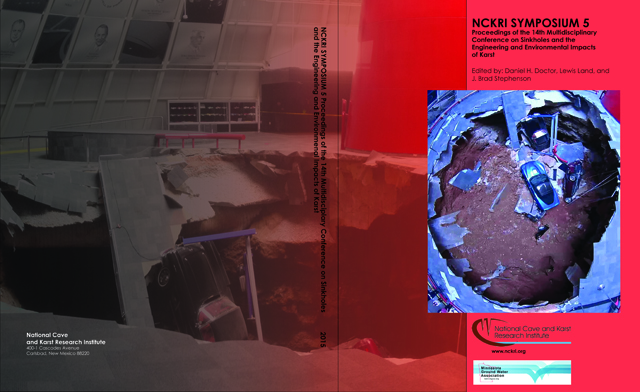Abstract
Heavy precipitation in the UK in February 2014 induced ground subsidence and consequently a rapid increase in the frequency of sinkhole occurrences. These new sinkhole collapses emphasise the need to further analyse the causes of the increased occurrence by investigating the relative importance of various surficial factors. Malham and the Mendips are two areas of particular interest, since both are underlain by limestone bedrock and are susceptible to subsidence. This is due to limestone being primarily permeable in joints, and so it dissolves to form an extensive network of karstic caves. It was therefore useful to compare two sites of similar geology, both from the Triassic and Jurassic periods, as this controlled the amount of presently exposed limestone from past glacial retreat, for accurate comparison of susceptibility. Susceptibility maps of the two areas were created by integrating GIS application and statistical methods to develop algorithms to address the issue of dissolution. The maps aim to identify the physical surficial conditions, in addition to heavy precipitation that exacerbates subsidence development. Statistical testing of the GIS data indicated that in Malham, slope is the most significant parameter (Kruskal-Wallis, H=29.36, p<0.001; H=14.55, p=0.006 respectively) in sinkhole formation; while in the Mendips altitude is the most significant parameter (Kruskal-Wallis, H= 20.44, p<0.001; H= 86.51, p<0.001 respectively). Curvature appeared less statistically significant with fewer values reported from post-hoc Mann-Whitney U tests. This integrated geological mapping and statistical approach will prove useful in delineating susceptibility zones in areas within the UK.
Rights Information

This work is licensed under a Creative Commons Attribution-Noncommercial-Share Alike 3.0 License.
DOI
http://dx.doi.org/10.5038/9780991000951.1038
Included in
Civil and Environmental Engineering Commons, Earth Sciences Commons, Environmental Sciences Commons
Down the Rabbit Hole: Identifying Physical Controls on Sinkhole Formation in the UK
Heavy precipitation in the UK in February 2014 induced ground subsidence and consequently a rapid increase in the frequency of sinkhole occurrences. These new sinkhole collapses emphasise the need to further analyse the causes of the increased occurrence by investigating the relative importance of various surficial factors. Malham and the Mendips are two areas of particular interest, since both are underlain by limestone bedrock and are susceptible to subsidence. This is due to limestone being primarily permeable in joints, and so it dissolves to form an extensive network of karstic caves. It was therefore useful to compare two sites of similar geology, both from the Triassic and Jurassic periods, as this controlled the amount of presently exposed limestone from past glacial retreat, for accurate comparison of susceptibility. Susceptibility maps of the two areas were created by integrating GIS application and statistical methods to develop algorithms to address the issue of dissolution. The maps aim to identify the physical surficial conditions, in addition to heavy precipitation that exacerbates subsidence development. Statistical testing of the GIS data indicated that in Malham, slope is the most significant parameter (Kruskal-Wallis, H=29.36, p<0.001; H=14.55, p=0.006 respectively) in sinkhole formation; while in the Mendips altitude is the most significant parameter (Kruskal-Wallis, H= 20.44, p<0.001; H= 86.51, p<0.001 respectively). Curvature appeared less statistically significant with fewer values reported from post-hoc Mann-Whitney U tests. This integrated geological mapping and statistical approach will prove useful in delineating susceptibility zones in areas within the UK.

